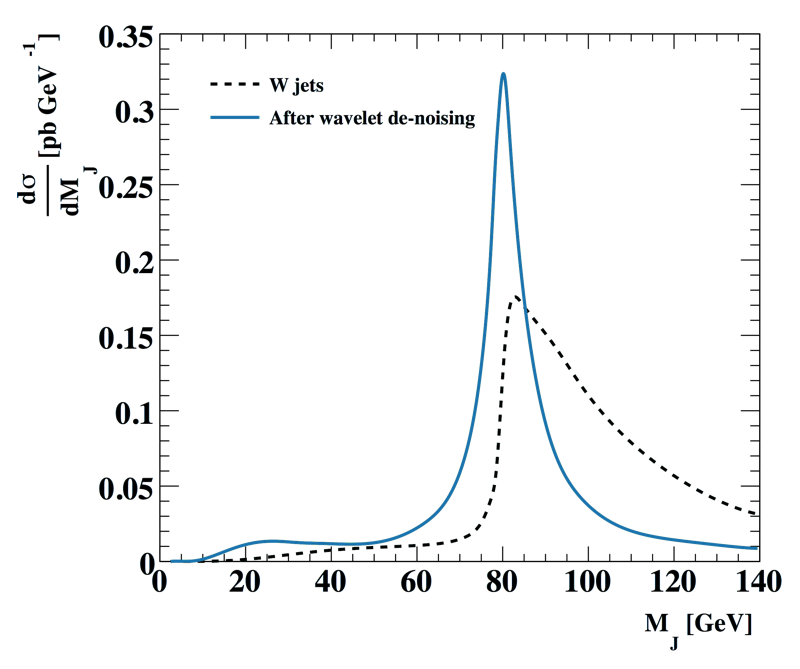|
Noise Elimination With Wavelets At Vast Energies
New Wave is a C++ library for performing wavelet analysis of high energy collisions, as described in this note on the arXiv (1405.5008 [hep-ph]). New Wave has an interface to perform wavelet analysis directly on HepMC events, and is also compatible with Rivet's particle class, PseudoJets from FastJet, ROOT TLorentzVectors or most other collections of objects that have momentum accessors or posses a momentum() method. Whatever your analysis is based on, it is likely you can easily incorporate NewWave with minimal changes (and please let me know if you can't). The aim is to be able to take as input a collision event or a list of particles/four-vectors, analyse the event in the wavelet (frequency) domain and return a modified list of particles that have been subjected to wavelet analysis. The wavelet coefficients are also directly available, of course. This kind of analysis can reveal the (angular) scale-dependence of high energy collisions. For example, soft processes affect wide-angle components of events more than small-angle components and, conversely, the effect of hard processes tends to be focussed within small-angular components. The latter is traditionally understood in terms of fixed-radius jet finding algorithms; however, these are also sensitive to soft wide-angle contributions to the event. The New Wave approach aims to first separate the wide- and small-angle contributions and then run the jet algorithm. Wavelets are particularly suited to this, since (in the discrete form) they provide an orthogonal basis set describing the event and have some nice scaling relationships that are ideal for systems that exhibit self-similarity, like parton showers. A classic use for this kind of analysis is the removal of noise from a system, which in the case of a high energy collision translates as the removal of soft non-perturbative contributions - a desirable outcome for which several techniques are already employed. With New Wave, the soft component of an event is subtracted by simply removing any contribution in the wavelet domain that is less than around 1 GeV, which is the typical scale at which QCD becomes non-perturbative. 
The plot here shows the result of this "de-noising" on some 300 GeV Cambridge-Aachen jets, using a sample of hadronically decaying W bosons. Note that unlike some other techniques for removing soft activity from jets (pruning, jet area removal etc.), the New Wave method does not remove particles from the event or jet, it instead modifies them by subtracting an estimate of the soft contribution to each particle. This is in keeping with the spirit of quantum mechanics. Alternatively, in order to remove pile-up, New Wave can be run in a mode that does remove individual particles that are considered pure noise. |
